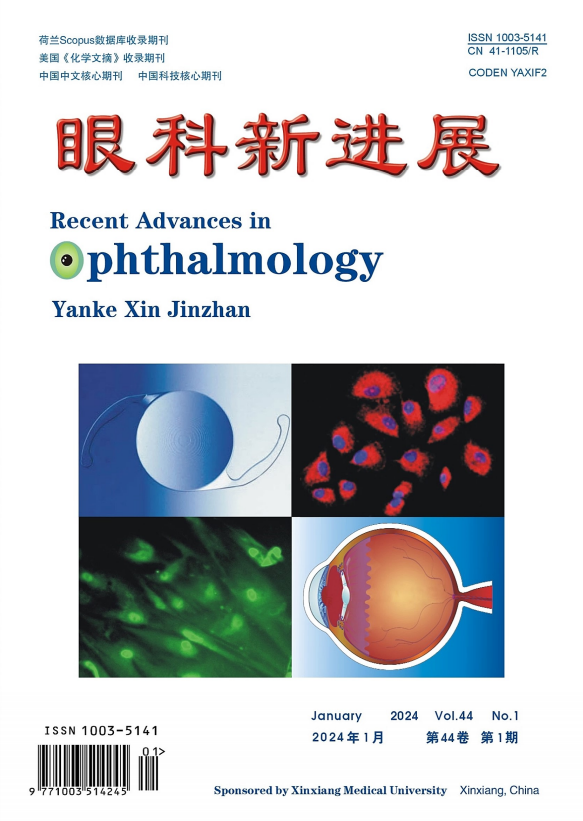K. Chi, K. Jia, Z. Zhang, Y. Pan, L. Zhao, T. Zuo
{"title":"严重急性呼吸综合征冠状病毒2型在眼表感染中的研究进展","authors":"K. Chi, K. Jia, Z. Zhang, Y. Pan, L. Zhao, T. Zuo","doi":"10.13389/j.cnki.rao.2021.0187","DOIUrl":null,"url":null,"abstract":"Severe acute respiratory syndrome coronavirus 2 (SARS-CoV-2), also known as COVID-19, is much more difficult to transmit through the ocular surface than that through the mouth and nose. However, the available evidence has suggested the possibility of ocular surface transmission, especially in medical staff. In this paper, we describe the existing SARS-CoV-2 ocular surface symptoms, the possible mechanism of SARS-COV-2 entering ocular surface cells and SARS-COV-2 transmission through ocular surface. In addition, the existing and future possible research directions of SARS-CoV-2 transmission through ocular surface were analyzed, so as to provide new ideas and methods for clinical treatment of SARS-CoV-2 from the perspective of ocular surface. © 2021, Xinxiang Medical University. All rights reserved.","PeriodicalId":21017,"journal":{"name":"眼科新进展","volume":"41 1","pages":"892-896"},"PeriodicalIF":0.0000,"publicationDate":"2021-01-01","publicationTypes":"Journal Article","fieldsOfStudy":null,"isOpenAccess":false,"openAccessPdf":"","citationCount":"0","resultStr":"{\"title\":\"Research progress of severe acute respiratory syndrome coronavirus 2 in ocular surface infection\",\"authors\":\"K. Chi, K. Jia, Z. Zhang, Y. Pan, L. Zhao, T. Zuo\",\"doi\":\"10.13389/j.cnki.rao.2021.0187\",\"DOIUrl\":null,\"url\":null,\"abstract\":\"Severe acute respiratory syndrome coronavirus 2 (SARS-CoV-2), also known as COVID-19, is much more difficult to transmit through the ocular surface than that through the mouth and nose. However, the available evidence has suggested the possibility of ocular surface transmission, especially in medical staff. In this paper, we describe the existing SARS-CoV-2 ocular surface symptoms, the possible mechanism of SARS-COV-2 entering ocular surface cells and SARS-COV-2 transmission through ocular surface. In addition, the existing and future possible research directions of SARS-CoV-2 transmission through ocular surface were analyzed, so as to provide new ideas and methods for clinical treatment of SARS-CoV-2 from the perspective of ocular surface. © 2021, Xinxiang Medical University. All rights reserved.\",\"PeriodicalId\":21017,\"journal\":{\"name\":\"眼科新进展\",\"volume\":\"41 1\",\"pages\":\"892-896\"},\"PeriodicalIF\":0.0000,\"publicationDate\":\"2021-01-01\",\"publicationTypes\":\"Journal Article\",\"fieldsOfStudy\":null,\"isOpenAccess\":false,\"openAccessPdf\":\"\",\"citationCount\":\"0\",\"resultStr\":null,\"platform\":\"Semanticscholar\",\"paperid\":null,\"PeriodicalName\":\"眼科新进展\",\"FirstCategoryId\":\"3\",\"ListUrlMain\":\"https://doi.org/10.13389/j.cnki.rao.2021.0187\",\"RegionNum\":0,\"RegionCategory\":null,\"ArticlePicture\":[],\"TitleCN\":null,\"AbstractTextCN\":null,\"PMCID\":null,\"EPubDate\":\"\",\"PubModel\":\"\",\"JCR\":\"\",\"JCRName\":\"\",\"Score\":null,\"Total\":0}","platform":"Semanticscholar","paperid":null,"PeriodicalName":"眼科新进展","FirstCategoryId":"3","ListUrlMain":"https://doi.org/10.13389/j.cnki.rao.2021.0187","RegionNum":0,"RegionCategory":null,"ArticlePicture":[],"TitleCN":null,"AbstractTextCN":null,"PMCID":null,"EPubDate":"","PubModel":"","JCR":"","JCRName":"","Score":null,"Total":0}
引用次数: 0
Research progress of severe acute respiratory syndrome coronavirus 2 in ocular surface infection
Severe acute respiratory syndrome coronavirus 2 (SARS-CoV-2), also known as COVID-19, is much more difficult to transmit through the ocular surface than that through the mouth and nose. However, the available evidence has suggested the possibility of ocular surface transmission, especially in medical staff. In this paper, we describe the existing SARS-CoV-2 ocular surface symptoms, the possible mechanism of SARS-COV-2 entering ocular surface cells and SARS-COV-2 transmission through ocular surface. In addition, the existing and future possible research directions of SARS-CoV-2 transmission through ocular surface were analyzed, so as to provide new ideas and methods for clinical treatment of SARS-CoV-2 from the perspective of ocular surface. © 2021, Xinxiang Medical University. All rights reserved.

 求助内容:
求助内容: 应助结果提醒方式:
应助结果提醒方式:


